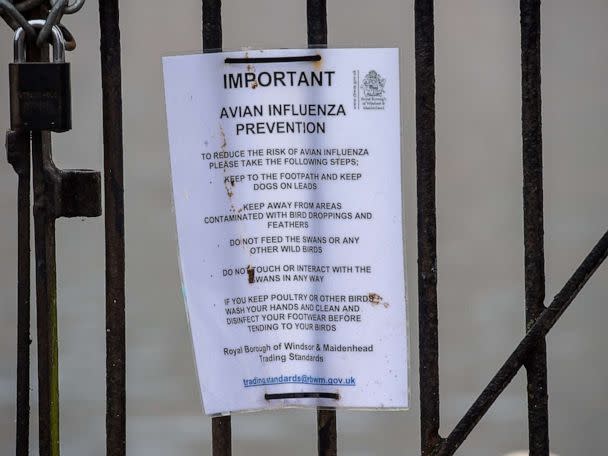What the latest bird flu outbreak could mean for humans

A dangerous and contagious bird flu continues to spread through poultry farms, wild birds, and now mammal populations.There’s still no sign the virus is capable of spreading between humans, but experts are watching the outbreak closely.
“The recent spillover to mammals needs to be monitored closely,” World Health Organization director-general Dr. Tedros Adhanom Ghebreyesus said during a press briefing. “For the moment, WHO assesses the risk to humans as low."
What is causing this bird flu outbreak?
This particular outbreak is caused by the H5N1 bird flu virus, which was first discovered in China in 1996. In 2021, a new variant of that virus emerged and started spreading around the world. The virus started infecting chickens on poultry farms in the United States in February 2022.
What is different about this outbreak?
The size, range, and number of species affected by this outbreak is unprecedented, says Nichola Hill, a virologist at the University of Massachusetts Boston.
This is the deadliest bird flu outbreak in U.S. history — nearly 60 million poultry have been affected. Wild birds in all 50 states have the virus. “It’s never really been seen in this number of different wild species before,” Hill says. It’s also infecting mammals: skunks, bears, seals, foxes, dolphins, and animals of other species are showing up with the virus. “That’s not really how bird flu should behave,” she says.
MORE: Bird Flu outbreak spreads to 27 states
Most troubling is that the virus appeared on a mink farm where it seems to have spread between minks — not just from birds to individual minks. That type of mammal-to-mammal spread is new. “We hadn’t seen that before,” Hill says.
Is there a risk to people?
Mammal-to-mammal spread is concerning, but it doesn’t automatically mean that the virus is going to significantly affect human populations.
People can get sick from bird flu, but cases are still rare. They’re usually seen in people who work closely with birds. One person in the United States has been infected with the virus during this current outbreak, and that person was responsible for culling sick poultry.
Right now, even though the virus may be evolving to infect more mammals, it hasn’t mutated in a way that would help it infect humans easier.
MORE: Is bird flu still a danger?
“It still isn’t hitting on that magic combination of mutations that are necessary to unlock efficient human transmission,” Hill says.
But it’s still important to watch and try to contain H5N1 spread in other animal species, because every time it adapts to a new host, there’s a chance those mutations could happen. “We’re rolling the dice every time,” she says.
The Centers for Disease Control and Prevention says people should avoid contact with wild birds, and that people who work with poultry should take precautions like wearing gloves and masks.
What the latest bird flu outbreak could mean for humans originally appeared on abcnews.go.com

 Yahoo Finance
Yahoo Finance 